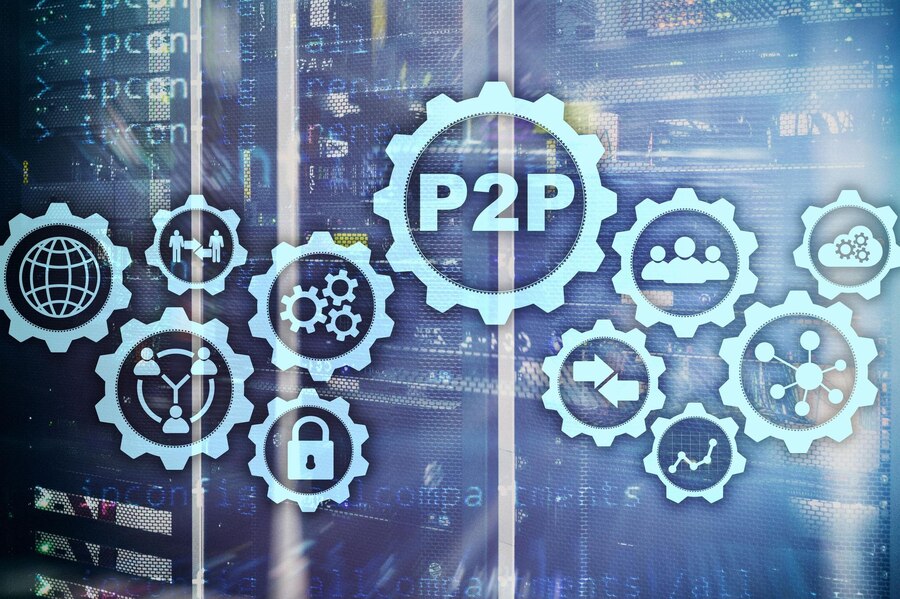In today’s business world, time is crucial and competition is fierce. Being efficient is not just an advantage, it’s necessary for survival. Organizations, big and small, try to navigate through complex situations, improve processes, cut costs, and maximize their employees’ abilities.
Innovation and evolution create Procure-to-Pay process automation. It is a solution that transforms how businesses operate and succeed in the digital age. Let’s explore P2P process automation, discovering its efficiency and potential to transform operations and create a future full of possibilities.
Unveiling the Power of P2P Automation: Beyond Efficiency
P2P process automation means using technology and software to make tasks in the procure-to-pay process easier. This process involves choosing, getting permission, inspecting, and paying for goods or services.
The attractiveness of P2P process automation lies in its ability to make operations smoother, save money, and improve efficiency. Automating tasks like data entry, document processing, and invoice matching reduces errors and delays for organizations. This saves time and removes the need for manual work, letting employees concentrate on important tasks.
P2P process automation saves money by improving procurement practices. It helps organizations see how they spend money, find ways to save, and negotiate better deals with suppliers. Automation also helps follow rules, reducing the risk of unauthorized spending and penalties for not following policies and contracts.
P2P process automation improves efficiency by eliminating paper processes, reducing errors, and facilitating faster decision-making.
P2P process automation offers benefits beyond the obvious ones. It can transform organizational processes and foster innovation.
By automating routine tasks, employees can dedicate their time to more significant and creative work. This freedom lets them think and come up with new ideas to improve processes, creating an innovative culture.
P2P process automation helps organizations use AI and ML to understand their procurement data better. P2P process automation helps organizations use AI and ML to better understand their procurement data. They can study past spending, supplier performance, and market trends. By doing so, organizations can make smarter decisions, spot risks, and effectively manage their supply chain.
This data-driven approach improves efficiency and allows organizations to stay ahead and innovate in their procurement practices. This data-driven approach improves efficiency and allows organizations to stay ahead and innovate in their procurement practices.

Empowering Creativity and Innovation:
P2P automation boosts innovation by freeing employees from boring tasks and allowing them to be more creative. It doesn’t hinder human creativity as some may think.
Imagine a procurement team free from boring tasks like entering data and doing administrative work.
Imagine a procurement team that is free from mundane tasks like data entry and administrative work. Now, they can concentrate on discovering innovative ways to obtain supplies, establishing crucial relationships, and generating creative solutions for challenging problems.
Organizations can create an innovative culture by using automation to simplify tasks. In this culture, employees are encouraged to think creatively, take risks, and push limits. After all, it’s not the technology itself that drives innovation—it’s the human ingenuity unleashed by its transformative potential.
Accelerating Decision-Making and Adaptation:
In today’s turbulent business landscape, agility is not just a desirable trait—it’s a strategic imperative. Herein lies the transformative power of P2P process automation.
By providing organizations with real-time insights and data-driven intelligence, automation accelerates decision-making processes and empowers leaders to navigate uncertainty with confidence. Procurement experts can adapt their plans to market changes, seize new opportunities, and mitigate risks through automation. This allows them to quickly respond to market dynamics and capitalize on emerging opportunities while minimizing potential risks.
Automation helps organizations adapt to changing demand and save money by adjusting inventory and improving supplier relationships. It gives them the flexibility to succeed in today’s fast-paced business world. Using automation to make fast decisions and adapt helps organizations stay ahead and benefit from growth and innovation.
Cultivating Collaboration and Connectivity:
In the interconnected ecosystem of modern business, collaboration is not just a nicety—it’s a strategic imperative. P2P process automation serves as a linchpin, fostering seamless collaboration and connectivity across departments, teams, and external stakeholders.
No more separate processes and broken systems; automation brings together information and encourages collaboration in one system. Picture a scenario where procurement teams collaborate seamlessly with suppliers to optimize inventory levels, negotiate favorable terms, and drive innovation across the supply chain.
Automation builds trust and transparency, breaking barriers and creating stronger relationships for successful partnerships. Automation helps organizations utilize employee and partner knowledge and skills to generate new ideas and expand. It involves sharing data, working together on projects, and coordinating different teams.
Championing Sustainability and Social Responsibility:
In an era defined by growing environmental concerns and social consciousness, sustainability and social responsibility have emerged as critical priorities for organizations worldwide. Herein lies the transformative potential of P2P process automation.
Automation helps organizations prioritize sustainability and social responsibility by making processes more efficient, reducing waste, and promoting ethical sourcing. Imagine a world where buying things is done in a way that helps the environment and society. Organizations would choose suppliers who are good at being environmentally friendly and socially responsible. Every purchase would be made with ethics and responsibility in mind.
Using automation to include sustainability and social responsibility in procurement helps organizations reduce environmental impact and support fair labor practices. This not only enhances their brand image but also fosters trust among customers and stakeholders. The influence of automation on organizations is substantial.
It reduces carbon emissions, promotes diversity, supports community development, and creates positive social and environmental change. This impact creates lasting change that will benefit future generations. This creates lasting change for future generations.
Exploring the Evolving Landscape of P2P Automation
As we explore P2P automation, it’s important to understand that this domain is constantly changing and evolving. This requires a comprehensive exploration of the emerging trends and innovations that are fundamentally altering the landscape.
P2P automation is advancing in various areas like AI, machine learning, blockchain, and IoT. There are no limits to the innovation happening in this field. Let’s delve deeper into these transformative trends that are reshaping the trajectory of P2P automation:
1. Artificial Intelligence (AI) and Machine Learning:
AI and machine learning are changing P2P automation by helping organizations analyze data, automate decisions, and predict future trends. By leveraging AI-powered algorithms, organizations can optimize procurement processes, identify cost-saving opportunities, and enhance supplier relationship management. AI chatbots and virtual assistants are changing how people use P2P systems. They provide immediate assistance and simplify the purchasing process.
2. Blockchain Technology:
Blockchain technology is very useful for automating P2P transactions. It is a safe and transparent platform that records and tracks the movement of goods and services in the supply chain. Using blockchain can improve transparency, traceability, and trust in procurement, reducing fraud, counterfeiting, and supply chain issues. Moreover, smart contracts powered by blockchain technology can automate contract execution and payment processes, enabling organizations to streamline transactions and eliminate manual intervention.
3. Internet of Things (IoT):
The IoT is changing P2P automation. It allows organizations to gather live data from connected devices and sensors in their supply chain. By leveraging IoT technology, organizations can gain visibility into inventory levels, monitor the condition of goods in transit, and optimize warehouse operations.
IoT devices can perform various tasks automatically. These tasks include ordering more supplies, improving delivery routes, and identifying maintenance problems. By doing so, these devices help organizations become more efficient and save money in the procurement process.
4. Predictive Analytics:
Predictive analytics is empowering organizations to anticipate future demand, optimize inventory levels, and mitigate supply chain risks. By analyzing historical data and identifying patterns and trends, organizations can make informed decisions and proactively address potential issues before they escalate. Predictive analytics assists organizations in making data-driven decisions to stay ahead in business. It achieves this by predicting supplier lead times, forecasting demand fluctuations, and identifying emerging market trends.
5. Enhanced User Experience:
In addition to technological advancements, there is a growing focus on enhancing the user experience within P2P automation systems. Design principles, interfaces, and dashboards are changing how users use P2P systems, making it simpler to navigate complex processes. Moreover, mobile-friendly interfaces and self-service portals empower users to access critical information and perform tasks on the go, increasing productivity and efficiency.
Bonus: Exploring the Human-Centric Approach to P2P Automation
Amidst the excitement surrounding technological advancements and digital transformation, it’s crucial not to overlook the human element in P2P automation. While cutting-edge technologies drive efficiency and innovation, it’s the people behind the processes who ultimately determine success. That’s why organizations are increasingly embracing a human-centric approach to P2P automation—one that prioritizes employee well-being, empowerment, and engagement.
Organizations can help employees succeed in an automated environment by promoting continuous learning and skill development. Training and development programs improve employee satisfaction, keep them in the company, and help them adapt to technological changes.
We include employees in automation, from planning to optimization, to hear their voices and use their expertise effectively. Organizations can achieve P2P automation by seeking feedback, addressing concerns, and fostering a sense of involvement and responsibility among everyone.
Additionally, recognizing and celebrating the contributions of employees in driving automation initiatives fosters a culture of appreciation and recognition. Whether through employee recognition programs, rewards, or simply expressing gratitude, acknowledging the efforts of individuals encourages continued engagement and commitment to the automation journey.
Technology advances P2P automation, but human involvement decides its success. Organizations can create a successful environment by focusing on employee well-being, empowerment, and engagement. This successful environment allows technology and humanity to work together. As a result, it leads to innovation, efficiency, and growth.
Final Thoughts:
As we explore P2P automation, it’s clear that the future offers endless chances for innovation, growth, and change. New technologies such as AI, blockchain, IoT, and predictive analytics are revolutionizing procurement for organizations. These technologies are enhancing efficiency, transparency, and flexibility in the process.
Organizations need to welcome and adopt P2P automation for the future with an open and forward-thinking approach. Manual, paper-based processes are ending. It’s time to use automation to drive business success. By using new technologies and being innovative, organizations can discover new opportunities, grow, and create value for everyone involved.
Embracing P2P automation means more than just using new technology. It involves fostering innovation, teamwork, and always striving to get better. It’s about empowering employees to embrace change, challenge the status quo, and drive positive change within their organizations. It’s about fostering partnerships with suppliers, customers, and stakeholders to co-create value and drive mutual success.
As we stand on the brink of a new era of digital transformation, the future of P2P automation is ours to shape. In the future, organizations will be better at their work and also care about the environment and society. In the future, procurement is transparent, traceable, ethical, and every transaction helps create a better world.
So let us embrace the future of P2P automation with courage, conviction, and an unwavering commitment to excellence. Let us seize this opportunity to redefine how we do business, how we interact with the world, and how we shape the future. Automation brings a better future for organizations, communities, and society as a whole. Together, let us embrace the future of P2P automation and pave the way for a future teeming with possibilities.











